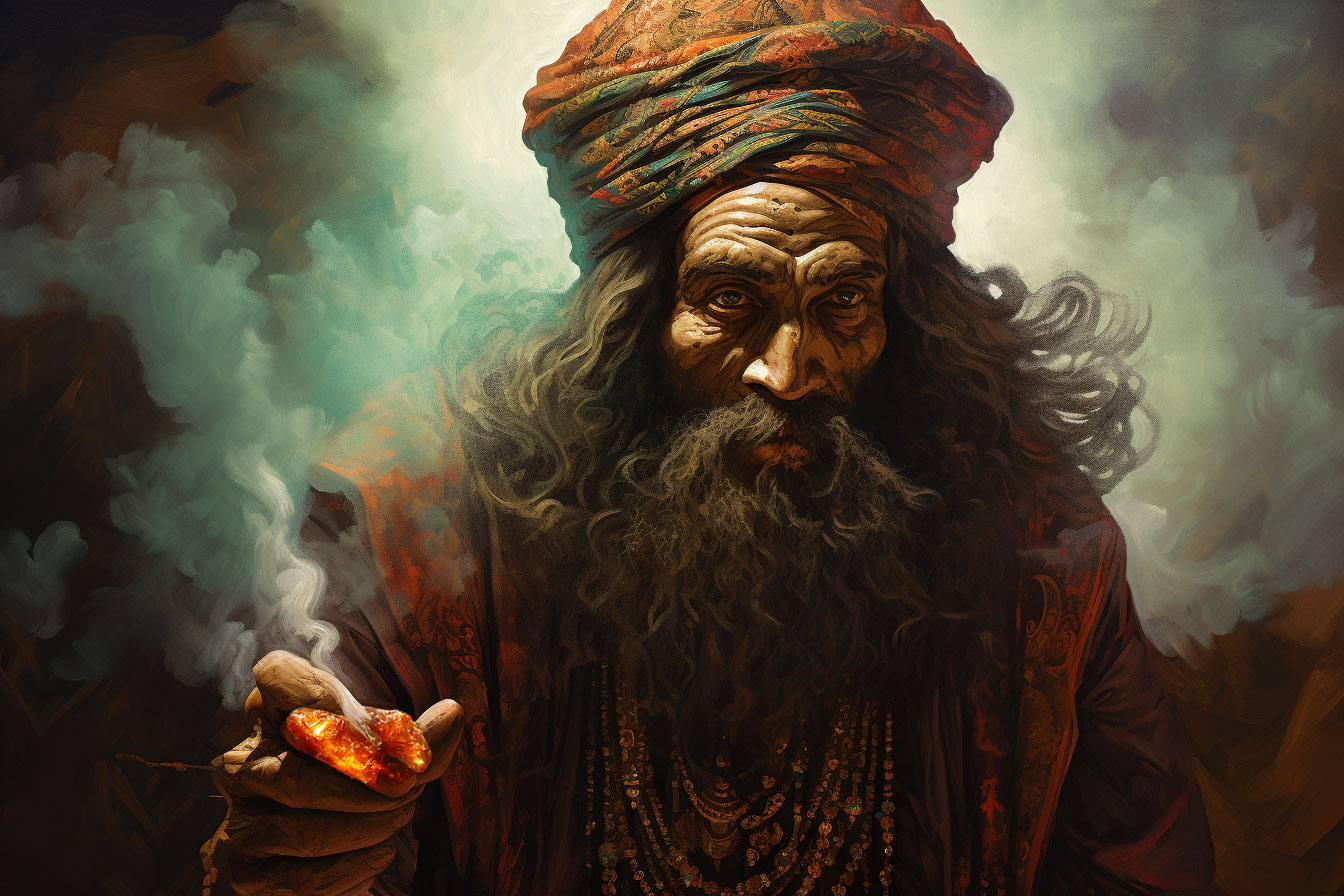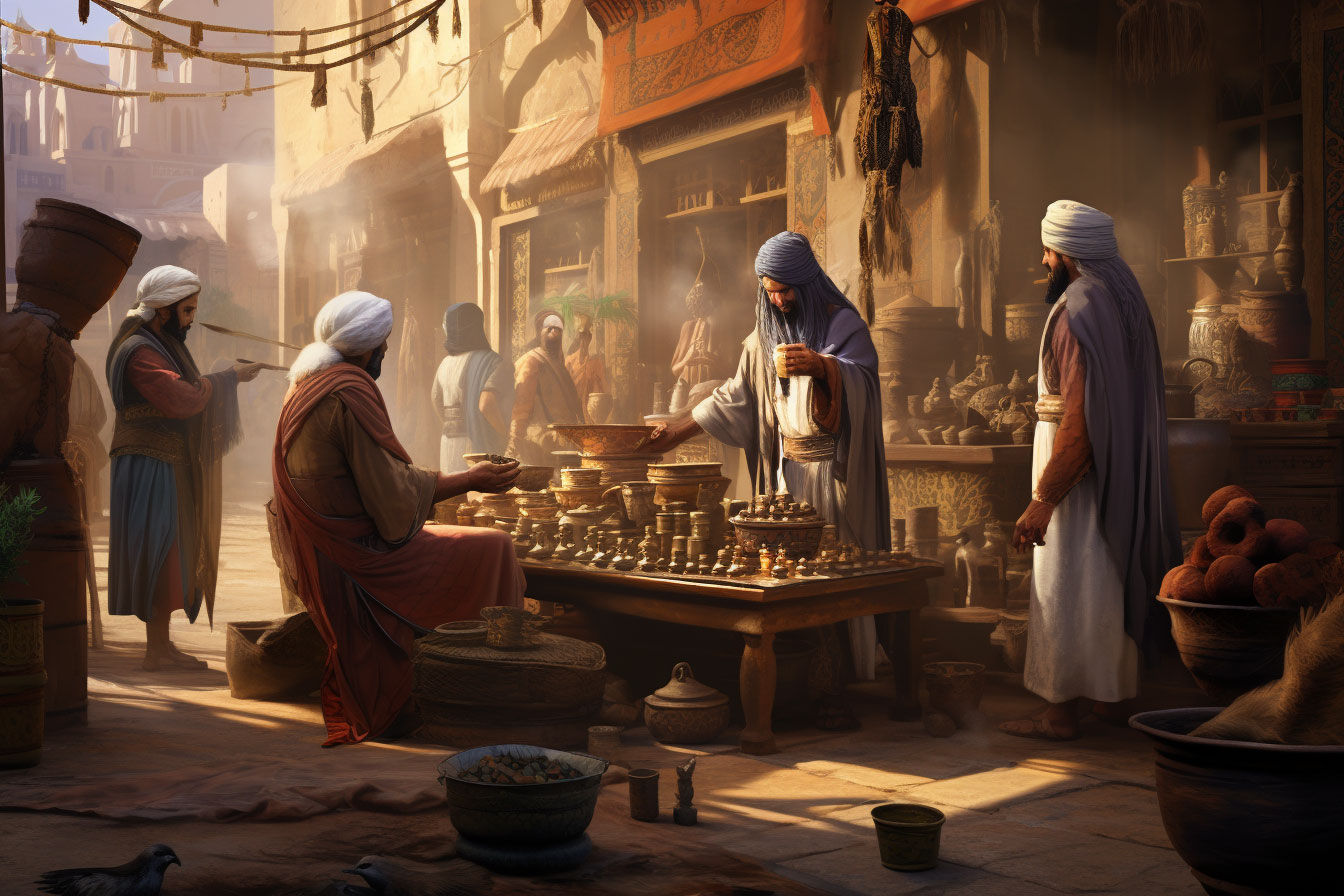Mwandishi - Feather Scribes
The Mwandishi are an enigmatic and specialized group of shamans, primarily hailing from the Qāāzami tribes. They possess the rare ability to manipulate the mystical Manyoya feathers, imbuing them with dreams, and stories. They operate in unique establishments known as NdotoYaBiashara, which function as both commercial enterprises and sanctuaries for oneiric quillcraft.
Type
- Creature Type: Humanoid (Qāāzami)
- Alignment: Varies (often Neutral)
- Challenge Rating: Varies based on individual abilities
Abilities
-
Group Trance Oneiric Quillcraft: Mwandishi can enter a collective trance state, often with other Mwandishi, to manipulate Manyoya feathers. They can alter existing stories or create entirely new ones, serving various purposes like spiritual guidance, memory preservation, or necromantic rituals.
-
Collaborative Duplication: While they don't imbue Manyoya feathers with magical properties themselves, Mwandishi work closely with Thaumaturges to duplicate feathers that have been imbued with magical properties. This allows for the mass production of such feathers.
-
Trance Induction for Access to Mahali Mizuka: Mwandishi can induce a trance-like state in themselves or others, granting temporary access to the Mahali Mizuka. This oneiric realm is accessed through the Maono Mhosa plant and serves as the workspace for their quillcraft activities.
-
Dream Element Addition: In collaboration with Thaumaturges, Mwandishi can add dream elements to Manyoya feathers that are intended for Thaumaturgic purposes. These elements can range from instructional guides to advertisements, enhancing the utility of the feathers.
Feather Preparations Created by Mwandishi

-
Manyoya ya Kuibiwa Ndoto: Necromantic feathers that capture knowledge and memories from the dying.
-
Manyoya ya Habari Ndoto (Habari):Feathers composed entirely of dreams crafted by the Mwandishi. Storytelling feathers, often for entertainment.
-
Manyoya Mchanun'yiko: Mixed preparations that include:
- Green and Blue: Denotes a feather of Thaumaturgic origin that has been altered by the Mwandishi. Most often for duplication, but also to add storytelling or informational content (instructions, warnings, and advertisement are all common.
- Yellow and Blue: Illicit feathers that can be altered to change the story of the deceased. These feathers could just be copies of the original yellow feather, but the touch of blue in these feathers can mean that the original feathers story has been altered in the process.
- Yellow, Blue, & Green (Manyoya ya Rangi Tatu): Extremely rare and illegal feathers with potentially catastrophic real-world consequences.

Importance of the Mwandishi in Sayarii
-
Cultural Significance: The Mwandishi serve as a bridge between the living and the dead, the material and the spiritual. They are both revered and feared, often consulted for their wisdom but also scrutinized for the ethical implications of their work.
-
Economic Impact: The NdotoYaBiashara are important economic establishments, especially for the Qāāzami, who maintain strong connections with their desert tribes to ensure a continuous supply of Maono Mhosa and potential Mwandishi.
-
Magical Ecosystem: They play a crucial role in the magical ecosystem of Sayarii, often working in tandem with Thaumaturges and other magical practitioners.

Manyoya ya Mchanganyiko: A Yellow and Blue Feather, a Testament to the Mwandishi's Oneiric Quillcraft and Story Alteration. A Rare Glimpse into the Illicit and the Mystical.
History
In the beginning they came from the desert, the Mwandishi, drawn by the feathers. Drawn by smoky oneiric tendrils that crept across the endless sands of the Mahali Mizuka, from the cities, where the Mwandishi were gathering into NdotoYaBiashara, oneiric families that dreamt together and worked the Manyoya quills in cool darkened dens full of the smokey perfume of the Maono Mhosa Resin. Mwandishi were once numbered. The Mwandishi were Qāāzami Shamans. Those touched by the Maono Mhosa. a tribe might keep two shaman, and a small collection of acolytes, but rarely more. Most tribes only numbered between twenty and a hundred souls... The Qāāzami are nomadic tribes that wander and sustain themselves in the vast deserts of the Bara Kusini, following seasonal springs, and oasis across vast distances. Trading goods with cities in the marketplaces on their seasonal routes, trading desert gathered specialties, plants and insects for dyes, preserved desert species, and scavenged metals, sometimes magitech for grains, textiles and other items and goods that could not be found in the furnace like deserts of the Bara Kusini.

Jiwe smoke fills the street outside the well established NdotoYaBiashara Qir'atGhār
in the Wilaya District of Il-Wāāt ul'Ihāt Kathira
But everything changed when the Manyoya arrived in the Bara Kusini, this magical oddity brought to the shores of the Mchanga Hasira by Seaborn traders. Brought across the seas from the The Hazina Dada, the "Rich Sisters", a pair of tropical rainforest islands far to the east and across the ocean desert, a place looked upon with awe and fear by the Qāāzami.
When historically a Mwandishi first tasted a Manyoya isn't clear, some estimate that the Mwandishi began experimenting with the Manyoya quills for 50 years before the Mwandishi Abeni Ajani Malewez presented the Third Maandalizi - Manyoya ya Ndoto to a stunned and outraged cloister of academics in the halls of the Kathira'an University in Il-Wāāt ul'Ihāt Kathira.
It must be understood what makes a Mwandishi a Mwandishi. When a Qāāzami reaches the age of 5 (about 15 for us) they pass into adulthood, both legally within Qāāzami customs and laws, and spiritually. Around their birth date, the Qāāzami will attend an Ol'Ghahār, a pivotal coming-of-age ceremony in Qāāzami culture, marking the transition from youth to adulthood and self-sufficiency. During this rite, participants are exposed to Jiwe, the resinous amber-like dried sap of the Maono Mhosa, imbued with magical properties. The ceremony takes place in a sacred chamber filled with the smoke of burning Jiwe, allowing the participants to potentially enter the Mahali Mizuka, a dream-like trance state.
It is during this ceremony that the Ol'Chagūl, or "those chosen," are identified. These are the individuals who respond to the Jiwe's smoke by entering the Mahali Mizuka and demonstrating an ability to manipulate this dream realm. They are presented with the option of following the shamanic path and joining the shamanic elders as acolytes. Only about one in twenty people respond to the Jiwe's smoke, in this way, and it is these rare individuals who have the potential to become Mwandishi, the masters of oneiric quillcraft.
The Ol'Chagūl1 are considered a special subset within the Qāāzami community, revered for their unique connection to the Mahali Mizuka and their potential to become Mwandishi. However, it's important to note that not all Ol'Chagūl choose the path of the Mwandishi. Some may opt for other roles within the tribe, but their status as Ol'Chagūl remains a lifelong honor.
1. In contrast, the Mizimu, or "The Haunted Ones", have a similar but distinct experience. Unlike the Qāāzami, they do not commonly use Jiwe and their interaction with the Mahali Mizuka is often spontaneous, akin to lucid dreaming. While they too can manipulate the dream realm, their abilities are often less refined due to the lack of ritualistic practice that the Ol'Chagūl undergo. The Mizimu are often sought after as guides for navigating complex Manyoya feathers, but they are not considered Mwandishi unless they undergo the Qāāzami rituals and practices.
This nuanced difference between the Ol'Chagūl and the Mizimu highlights the cultural and spiritual complexities surrounding the art of oneiric quillcraft. While both groups have the potential to become Mwandishi, the path to mastery is deeply rooted in the traditions and ceremonies of the Qāāzami. It is this rich cultural tapestry that makes the Mwandishi not just artisans of a craft, but keepers of a sacred tradition that bridges the realms of the waking world and the Mahali Mizuka.